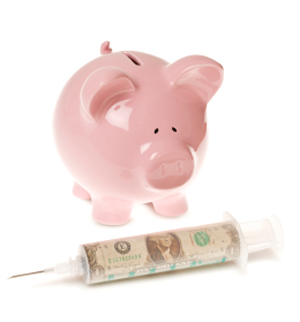April 4, 2011
Improving Health With Microfinance

By Michael D. Shaw
One topic that appears in virtually every news cycle is the surging cost of health care. Every major world power is struggling to find methods to deal with this crushing burden. Some sort of rationing seems almost inevitable, but the people will surely not take too kindly to this, having become accustomed to quick and mostly unlimited access to their health care practitioners. Yet, we may be forced to lower our expectations.
In the meantime, though, what happens to people living in the third world, whose expectations on health care could probably not get much lower? Beyond limited access to conventional organized health care, there is—in many cases—an appalling lack of even the most basic health knowledge.
Dozens of charitable groups, focused on this issue, vie for our contributions. But, is there another way?
One answer is microfinance. This ingenious means of extending credit refers to the notion of offering small loans with no collateral, to nontraditional borrowers such as the poor in rural or undeveloped areas. Microfinance was popularized in the 1970s by Muhammad Yunus, an American-educated Bangladeshi economist, and is now practiced by thousands of microfinance institutions (MFIs), servicing hundreds of millions of borrowers.
In many cases, the small loans are guaranteed by members of the borrower’s community. As such, peer pressure encourages prompt repayment, and microloans have an exceptionally low rate of default.
A recent review article, published in Health Policy and Planning, entitled “Integrating microfinance and health strategies: examining the evidence to inform policy and practice,” noted that:
The poor need access to a coordinated set of financial and other development services to improve household resources and health. MFIs offer a unique and underutilized opportunity, admittedly with challenges, for delivery of health-related services to those most in need.
The evidence is instructive in clearly indicating that the addition of health-related programs to microfinance services can change knowledge and behaviors associated with important and measurable health outcomes as diverse as reductions in fertility, decreases in morbidity, abatement of gender-based violence and changes in utilization of health services.
Davis, CA based Freedom from Hunger started its Microfinance and Health Protection initiative in 2006, enabling five MFIs to offer health protection services. These include Bandhan in India, CARD in the Philippines, CRECER in Bolivia, PADME in Benin, and RCPB in Burkina Faso.
The initiative is matching the needs of its clients…
- Knowledge of recommended health protection practices
- Cash to cover health expenses
- Access to affordable medicines
- Competent health care workers
- Access to predictable health coverage
with real world solutions, respectively…
- Health education
- Health savings and/or health loans
- Linkages to health product providers
- Linkages to health care providers
- Prepaid health and insurance plans
Kiva describes itself as a non-profit organization with a mission to connect people through lending to alleviate poverty. Founded in 2005, Kiva takes full advantage of the Internet to leverage its worldwide network of 130 MFIs, providing a means for anyone to lend as little as $25 to help create opportunity around the world. Website visitors can browse through the categories of lending opportunities (health is one of them), and choose the borrowers they wish to fund.
An innovative newcomer in this space is Microfundo, which bills itself as “The new mashup: Music + Microfinance.” Riffing on the concept of crowdfunding, Microfundo offers fans of indie music artists the opportunity to become stakeholders in their own music experience. Here, the microfinance is not actually a loan. Rather, fans can purchase music downloads, combined with increasing amounts of extra goodies, such as being listed in video production credits.
Occasionally, Microfundo’s activities cross over into health, as with all-woman Afro-Caribbean band Zili Misik’s latest project “Dance for Haiti.” Broadcast of the video will generate ad revenue, benefiting earthquake-ravaged Haiti’s Janbe dance program, whose seminars include body conditioning.
Microfinance in health care represents an encouraging blend of the free market, charitable institutions, and good old human ingenuity.

